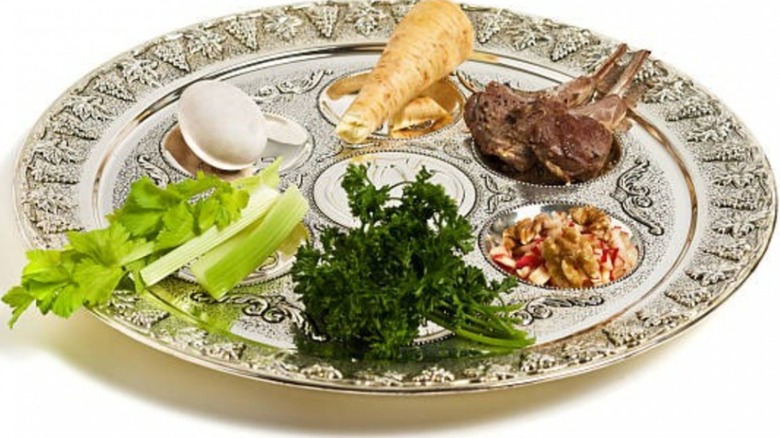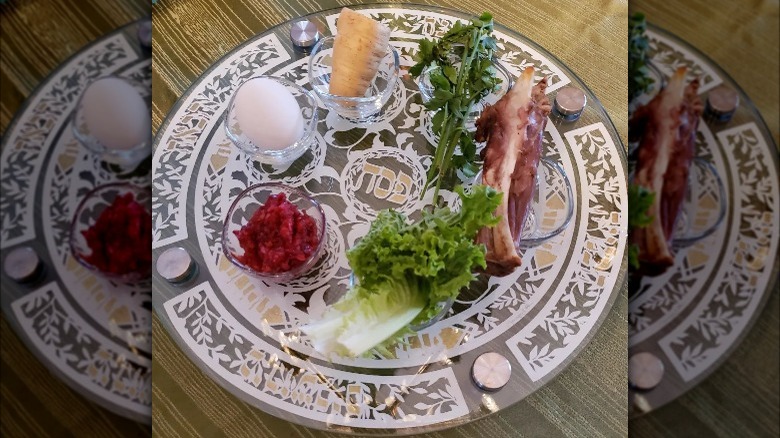The Significance Of Green Vegetables On The Seder Plate
Storytelling is an important part of many holidays, per The New York Times, but Passover takes storytelling a step further. Whereas on other holidays, the underlying story is a jumping-off point for religious observance, the primary edict on Passover is to tell the story of the Jewish people's descent into slavery in ancient Egypt and their subsequent journey to freedom. The story is told in such sense-stirring detail that it transcends into a vivid life experience for each person (via Chabad.org). The goal is for every Jewish person to feel as if they lived the journey themselves and become a trustee of the story so that it may be told and retold, year after year, generation after generation, by everyone and anyone capable of telling even a sliver of it.
Accordingly, engaging each child at the table — not to mention the child that resides in every adult – is essential (per My Jewish Learning). To do so, the annual recounting of the story in the form of the Seder, which is scripted by a book called the Haggadah, is punctuated by sensory experiences with different foods (via Jewish Enrichment Center). That includes a green vegetable on the Seder plate. The green vegetable, known as karpas, becomes an edible prop in the telling of the tale, along with a bowl of salted water.
The green vegetables on the Seder plate are significant on multiple levels
The Passover story begins with Joseph, whose coat of many colors caused his siblings to resent him and sell him into slavery in Egypt (via My Jewish Learning). Joseph transcended enslavement to become a confidant of the king, and his family and other Jews followed him to Egypt. However, when a new king took power diplomatic relations deteriorated and the Jewish people were enslaved for 200 years until their God gave them the tools they needed to free themselves.
The green vegetables on the Seder plate are a symbol of springtime, the season when the exodus occurred, via My Jewish Learning. But they're also said to be a symbol of Joseph's colorful coat, which catalyzed all the subsequent events. The green vegetable, typically parsley, is introduced early in the Seder and passed around the table for each person to dip into a bowl of salt water, which represents the tears of the enslaved.
On the one hand, dipping the green vegetables into salt water delivers a sensory experience with which to drive the symbolism home. On the other, it is meant to arouse curiosity and the asking of questions. It's definitely an interactive way to involve the younger future storytellers around the table and the child that resides in all adults.

